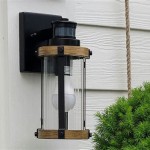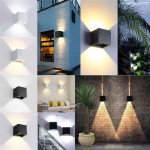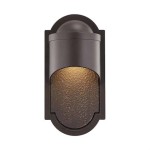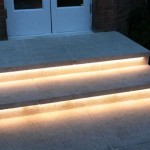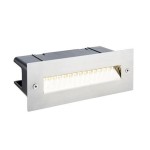Outdoor Solar Lights Battery Life: A Comprehensive Guide
Outdoor solar lights are a popular choice for illuminating gardens, pathways, and other outdoor spaces. Their ability to harvest sunlight and convert it into electricity for illumination makes them an environmentally friendly and cost-effective alternative to traditional lighting solutions. However, one crucial factor that influences the usability of these lights is the battery life. This article explores key factors that impact battery life, provides insights into maximizing battery performance, and offers guidance on choosing the right solar lights for your needs.
Factors Affecting Battery Life
The lifespan of a solar light's battery is influenced by several factors.
1. Battery Type
The type of battery used in a solar light significantly impacts its longevity. Common battery types include:
- Nickel-Cadmium (NiCd): These are widely used, affordable, and offer good durability. However, they have a lower capacity compared to newer batteries and are prone to the "memory effect," which can shorten their lifespan.
- Nickel-Metal Hydride (NiMH): NiMH batteries offer improved capacity and lower memory effect compared to NiCd. They are a good choice for solar lights, providing a balance of performance and cost.
- Lithium-ion (Li-ion): Li-ion batteries are becoming increasingly popular in solar lights due to their high capacity, long life, and light weight. While more expensive, they offer superior performance.
- Lithium-phosphate (LiFePO4): LiFePO4 batteries provide excellent safety, durability, and long life. They are often found in high-performance solar lights but can come at a higher price.
2. Battery Capacity
The capacity of a battery, measured in milliampere-hours (mAh), determines how much energy it can store. A higher capacity means longer runtime. Solar lights typically range from 500 mAh to 3000 mAh, depending on the size and brightness of the light.
3. Solar Panel Efficiency
The efficiency of the solar panel determines how effectively it converts sunlight into electricity. A higher efficiency panel will charge the battery faster, potentially extending the runtime. Typical efficiencies range from 15% to 20% for most solar lights.
4. Ambient Light Conditions
The amount of sunlight a solar panel receives directly impacts battery charging. Cloudy days, overcast skies, and shaded locations can significantly reduce the charging rate, leading to shorter runtimes.
5. Light Usage
The duration and frequency of using the solar light affect battery life. Frequent or prolonged use will deplete the battery faster, shortening its overall lifespan.
Maximizing Battery Life
While battery life is influenced by inherent factors, several strategies can help maximize its performance.
1. Optimize Panel Exposure
Position the solar panel to receive maximum sunlight throughout the day. Avoid obstructions like trees or buildings that can cast shadows. Consider adjusting the angle of the panel seasonally for optimal exposure.
2. Clean the Panel Regularly
Dust, dirt, and debris can accumulate on the solar panel, reducing its efficiency. Clean the panel periodically with a damp cloth to ensure maximum light absorption.
3. Use Motion Sensor Lights
If you choose motion sensor lights, they will only activate when movement is detected. This conserves battery power compared to lights that illuminate continuously.
4. Avoid Excessive Use
Limit the duration of light usage, especially during periods of low sunlight availability. If possible, reduce the brightness level to conserve battery life.
5. Replace Batteries When Necessary
Over time, batteries lose their capacity and need replacement. Monitor the performance of the solar lights and replace batteries when they start to show signs of weakness, such as shorter runtime or dimming lights.
Choosing the Right Solar Lights
When selecting outdoor solar lights, consider battery life as a key factor. Research the type, capacity, and efficiency of batteries used in different models. Look for lights with high-capacity batteries and solar panels with good efficiency ratings. Consider your specific needs, such as the duration of illumination required and the environmental conditions where they will be used.
By understanding the factors influencing battery life and implementing strategies for maximizing performance, you can ensure that your outdoor solar lights provide reliable illumination for extended periods. Choosing the right lights based on your requirements will ensure optimal performance and enjoyment of your illuminating outdoor spaces.

5 Best Outdoor Solar Lights Of 2024 Reviewed

The Best Solar Path Lights Of 2024 According To Testing Bob Vila

How To Outdoor Solar Lights For The Winter Istorage

Livivo Garden Outdoor Lights Solar Powered Led Ip44 Waterproof Auto On Off With 8hr Battery Life Pack Of 2 Diy At B Q

The 10 Best Solar Path Lights In 2024 Reviews And Guide Electronicshub

Dartwood Solar String Lights Outdoor Decorative Fairy For Your House Yard Or Garden 2 Pack In Blue Solarstringlight2pblueus The Home Depot

Alpine Corporation 2 3 Aaa Ni Cd Replacement Solar Rechargeable Batteries For Powered Garden Lights Set Of 4 Sla390 The Home Depot

Solar Outdoor Light 1000w Super Battery Life Lights Led Ip67 Waterproof Patio Complete System Wall Automatic

100 Brand 1000w Jjz Super Battery Life Solar Light Outdoor Led Lights Waterproof Lampu With Panel Inside The House Lighting

Balhvit Glass Solar Lights Outdoor 8 Pack Super Bright Pathway Up To 12 Hrs Long Last Auto On Off Garden Powered Wate Onbuy
Related Posts
